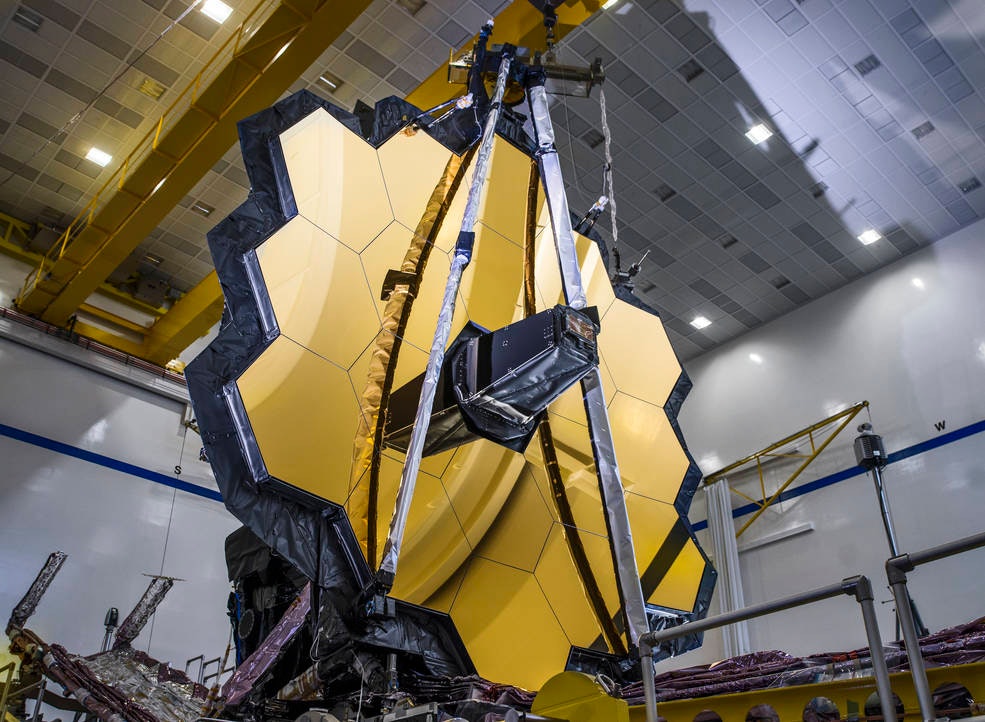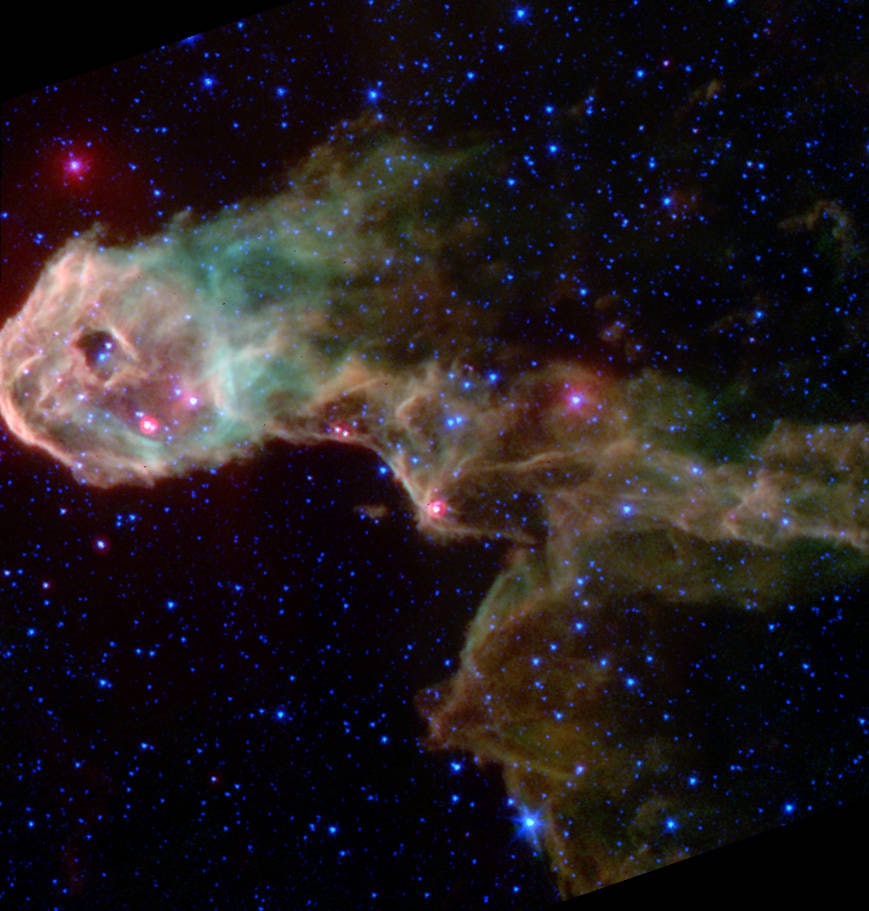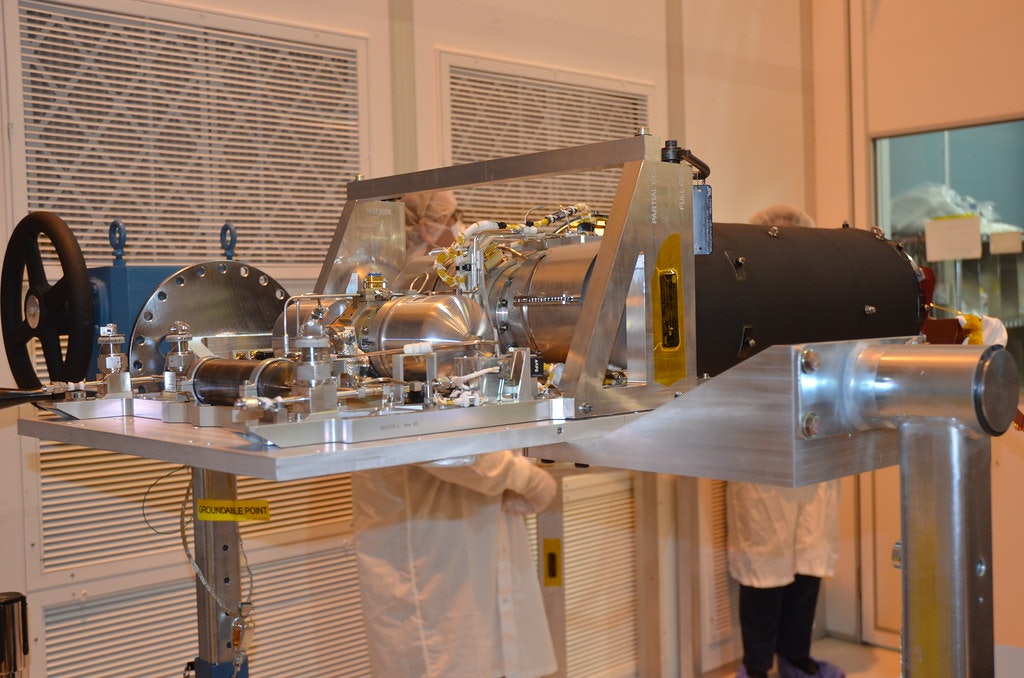
NASA’s James Webb Space Telescope has woken up its fourth and final instrument. Now the telescope is ready to take its final steps to stay on target for its first science observations this summer.
The next-generation observatory made news last month when its optical camera aligned 18 views of a bright star and focused them into a single sparkling shot. With Webb’s successful cooling of the Mid-Infrared Instrument (MIRI) — taking it from the balmy tropical temperatures of a French Guiana launchpad to just about as cold as the universe can get — last week, it can now begin calibrating for its final shots before the telescope is fully online.
But while the first star for aligning the mirrors was announced prior to its observations — HD 84406, a Sun-like star in Ursa Major — NASA won’t say yet what the first MIRI targets will be.
“At this point we are using a variety of stars for telescope alignment,” Jonathan Gardner, Webb deputy senior project scientist, tells Inverse in an email statement. “The targets are chosen by various criteria, such as brightness in the different instruments, whether they have nearby neighbors, etc.”

Next milestone for James Webb Space Telescope
Webb will release its first science data and imagery this summer. Its instruments may start taking observations and imagery in late June, and the team could publish them in mid-July.
With MIRI’s cryocooling success, Webb is now set for the seventh and final stage of its mirror alignment process, according to a NASA blog post published Thursday (April 14). The final stage will test the multi-field alignment of all four science instruments. MIRI will continue to be checked out ahead of that step.
For now, the Webb team is sighing a breath of relief at MIRI’s cryocooling success; this was a precondition for the last stage.
What is MIRI?
The Mid-Infrared Instrument (MIRI) can target a broad range of objects in infrared light. Faint bodies at the edge of the Solar System and the distant galaxies that have been stretched out away from us as the universe expands, for example, will come into view like never before.
Overall, infrared observations are important because they tell scientists how much heat something releases, the composition of an object (like whether or not it has water or organic compounds), and reveal things otherwise hidden behind thick veils of dust and gas.

MIRI in particular can see “beyond anything that has been available to astronomers to date” because it operates at much longer infrared wavelengths than the telescope’s other instruments. MIRI also surpasses visible light instruments when it comes to peering through the dust and gas that surrounds stellar nurseries, allowing scientists to learn more in-depth about how stars form.
But first, MIRI had to get very cold. The cryocooler that dropped MIRI’s temperature hundreds of degrees below that of a standard freezer had been running over the last several weeks, according to the NASA mission’s April 6 blog post.
Cooling down MIRI
Room temperature objects emit infrared waves; even air emits this light. Webb’s location in the naturally cold environment of outer space helps it to filter out infrared background noise from Earth. Being off the planet has passively dropped the temperature of the telescope’s instruments, which have been radiating their heat into space for most of the last three months.

But MIRI needs to be even colder than Webb’s other instruments to operate optimally. MIRI’s detectors are “blind” unless they are colder than 7 Kelvin (-266 degrees Celsius, or -447 degrees Fahrenheit), more than 200 degrees colder than a standard domestic freezer.
Engineers launched a cryocooler onboard Webb to actively cool MIRI. The instrument recently crossed this critical milestone to chilling out, setting it up to see the universe. The cryocooler reduced MIRI’s temperature in two steps; it first took the instrument down to 18 Kelvin, and the second step involved a heat exchange that brought the temperature down to just 7 Kelvin.







